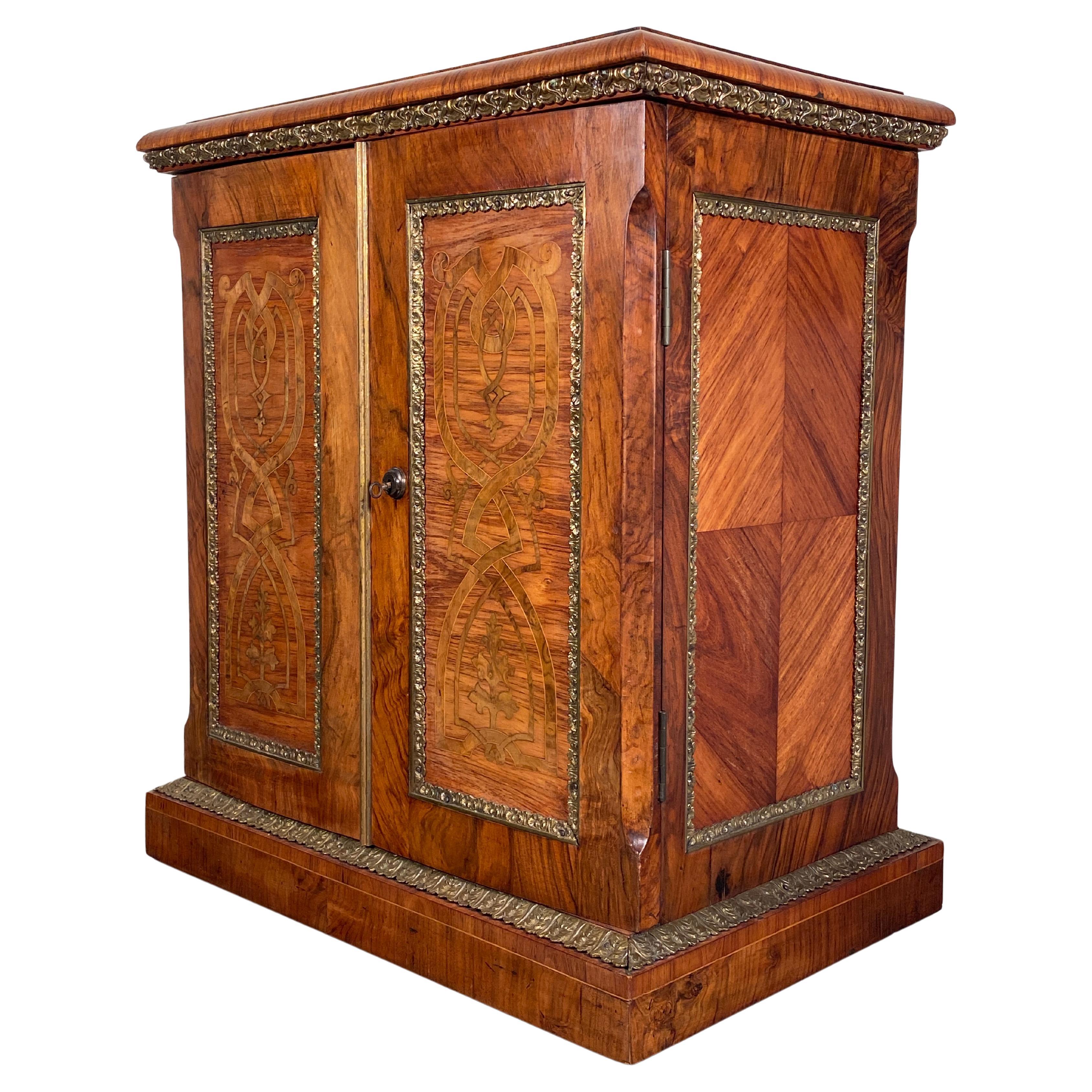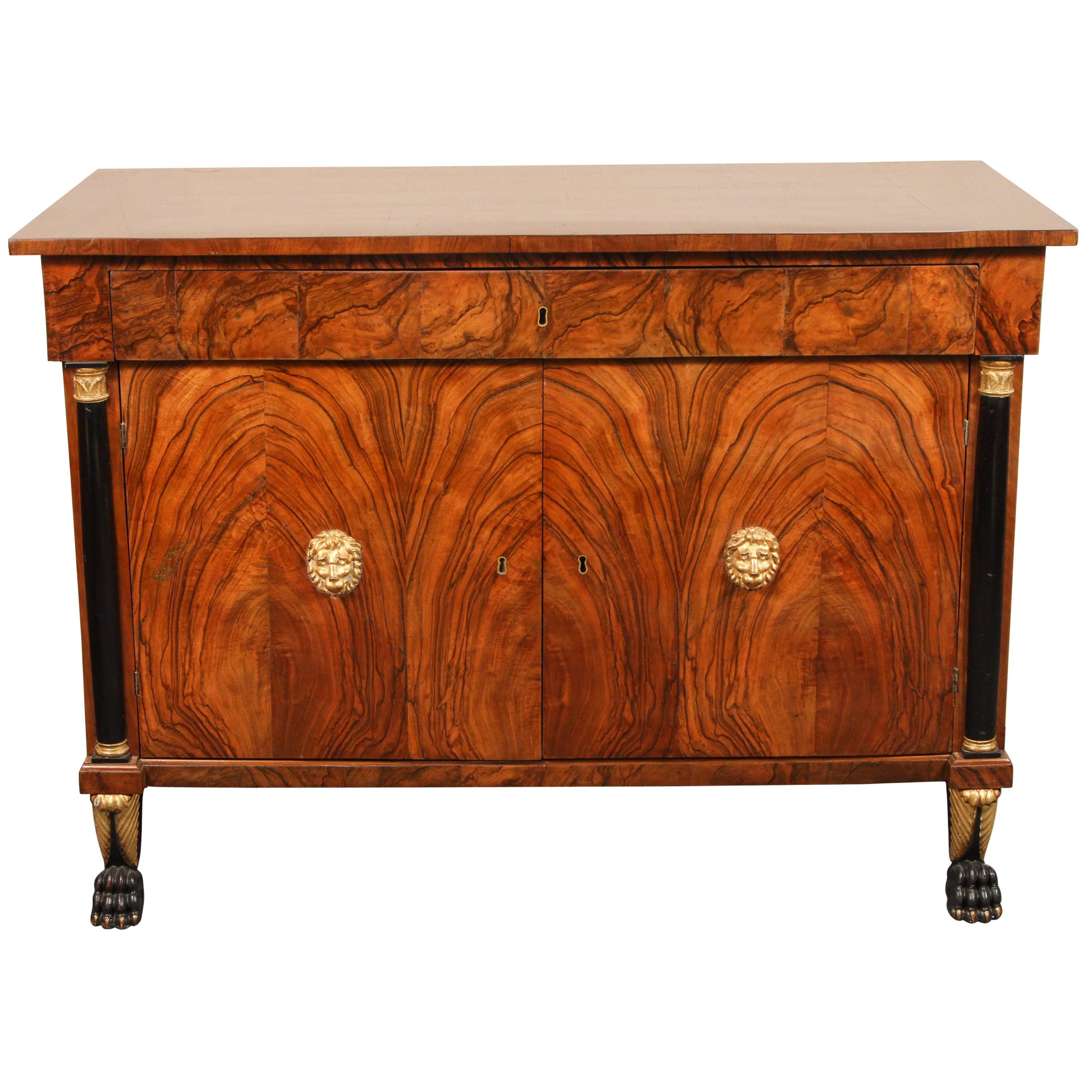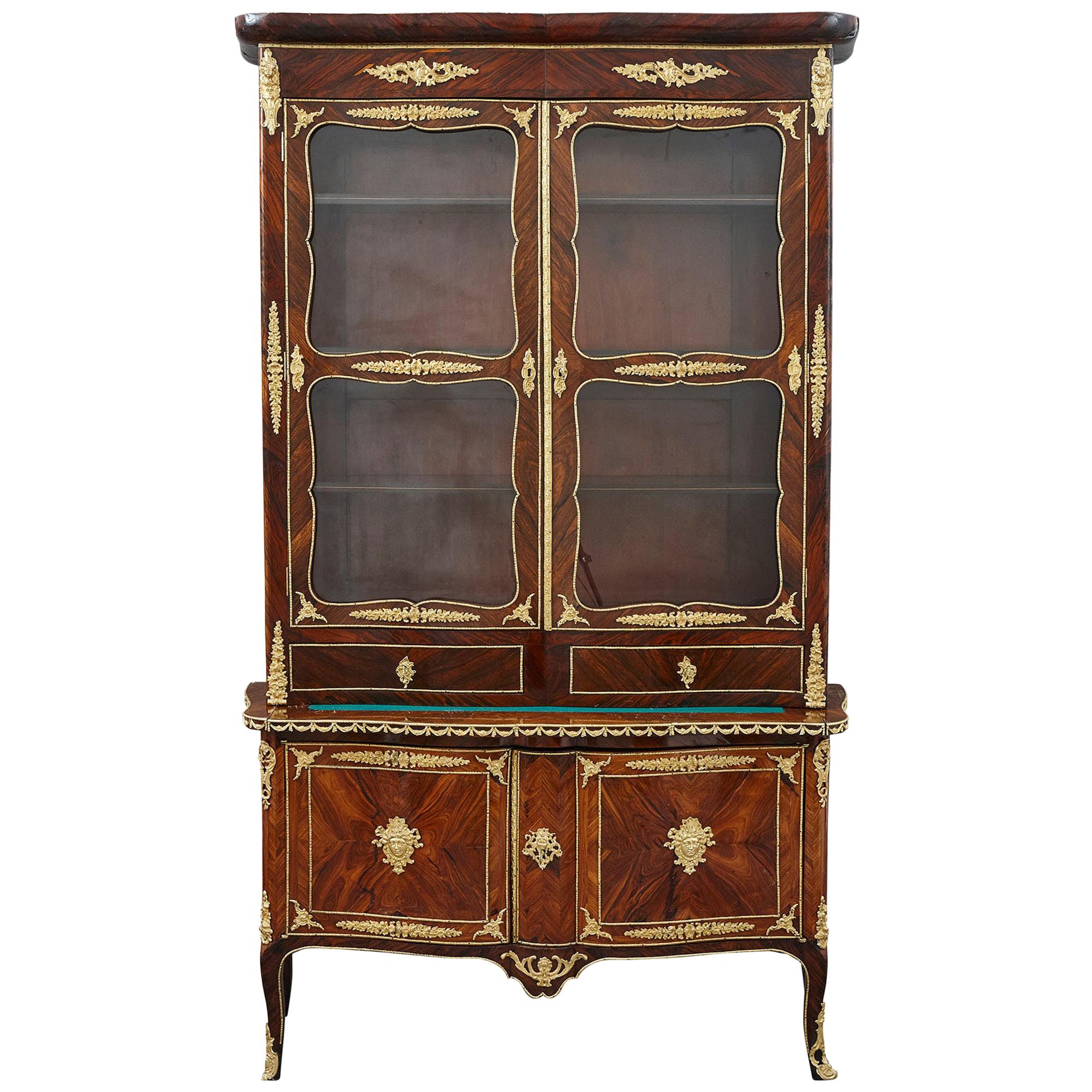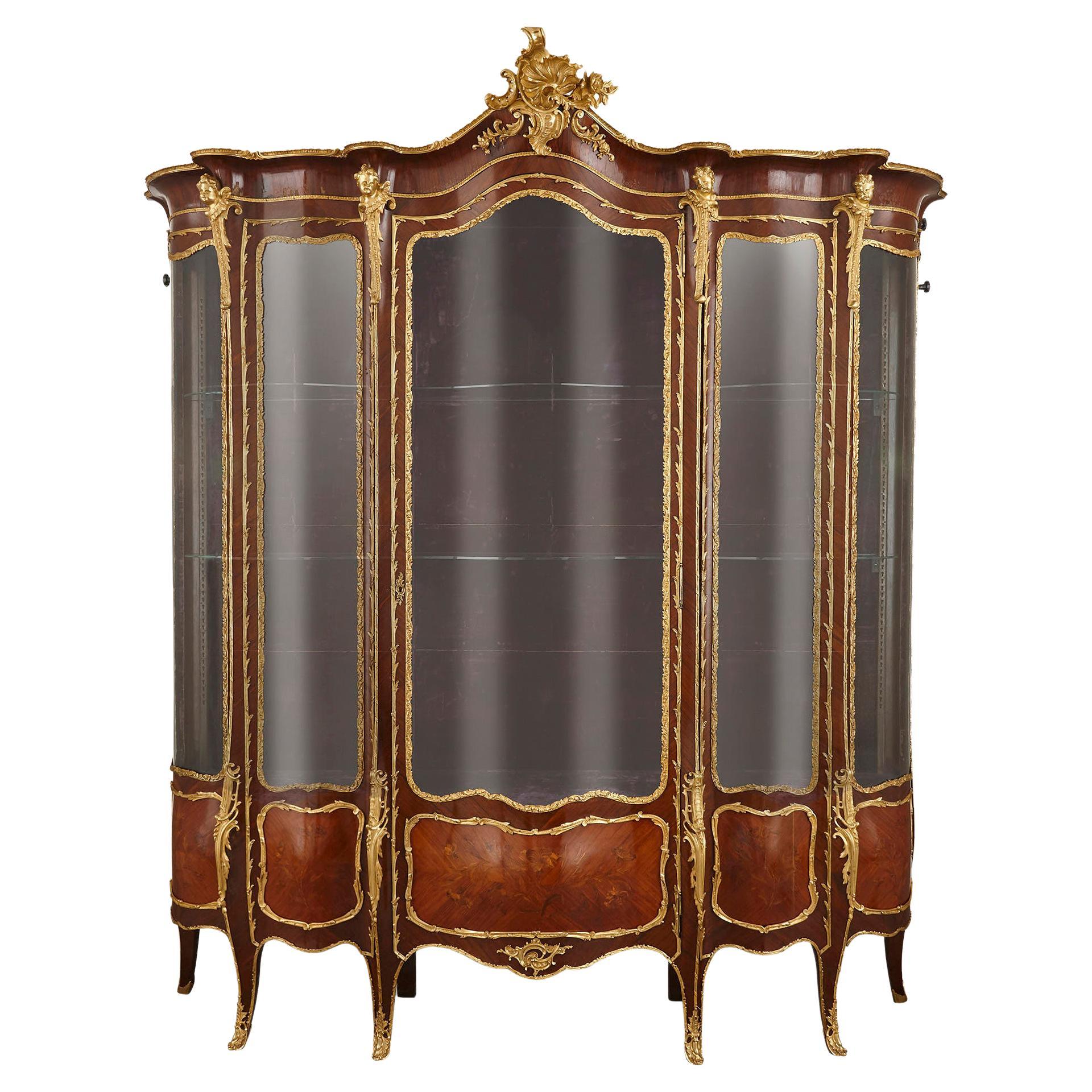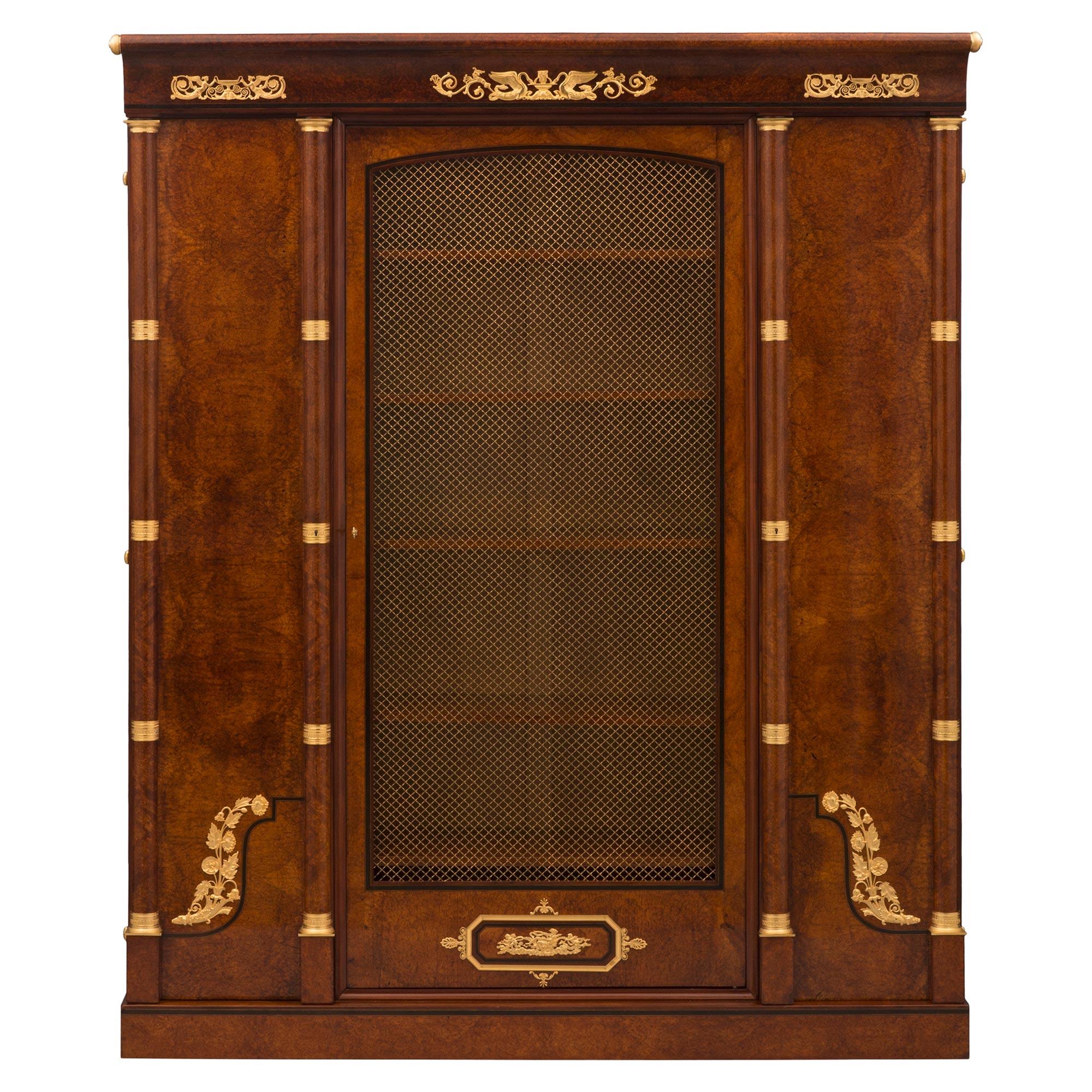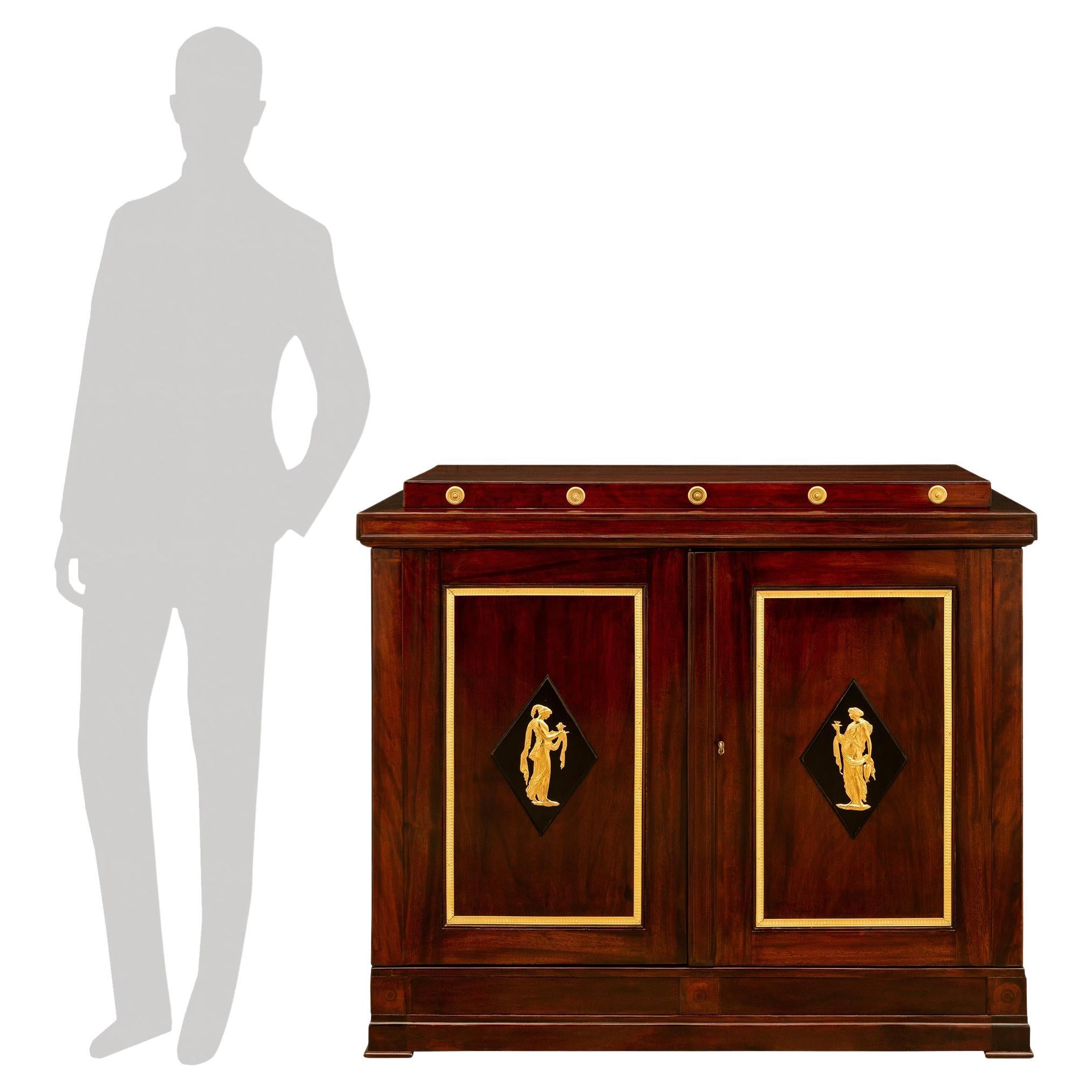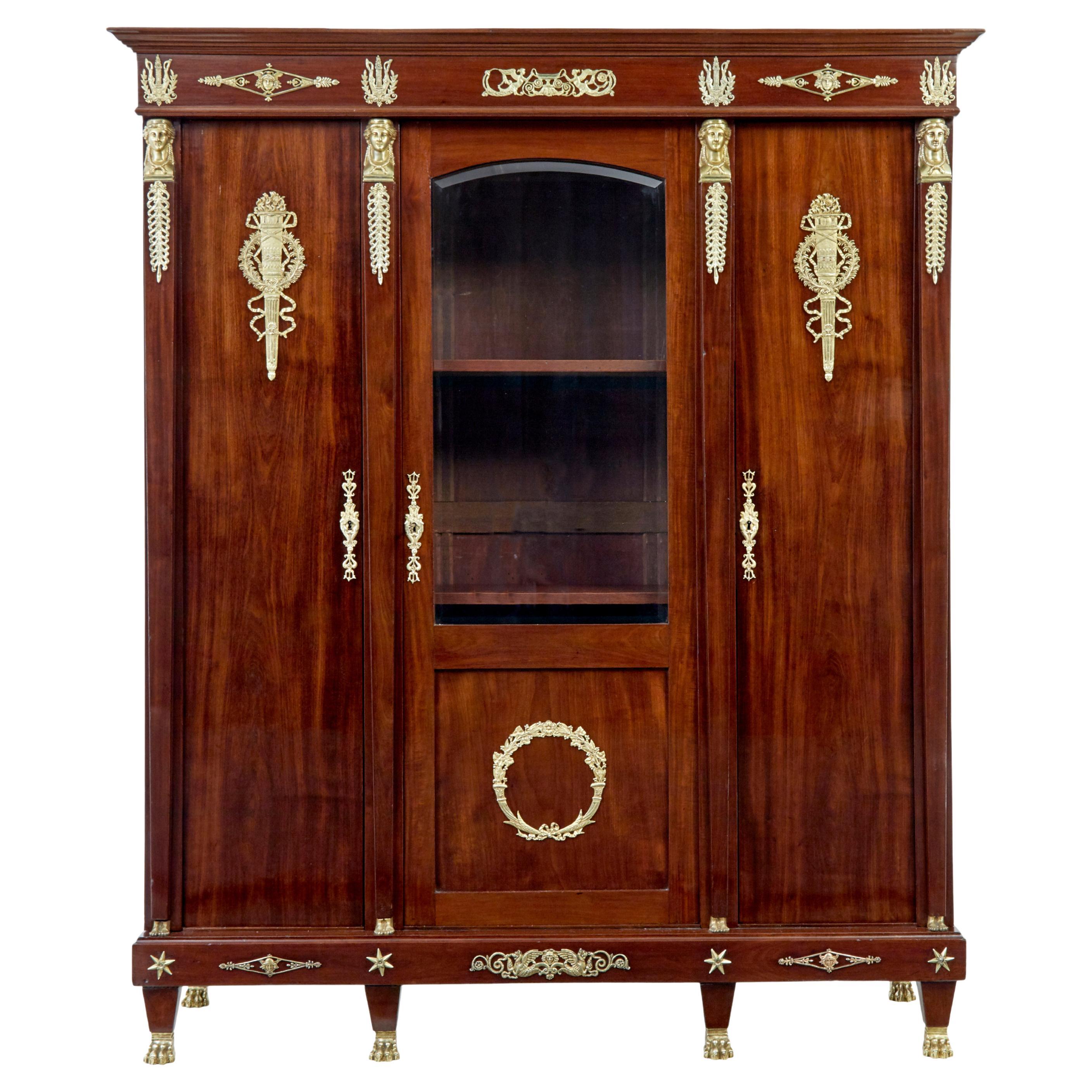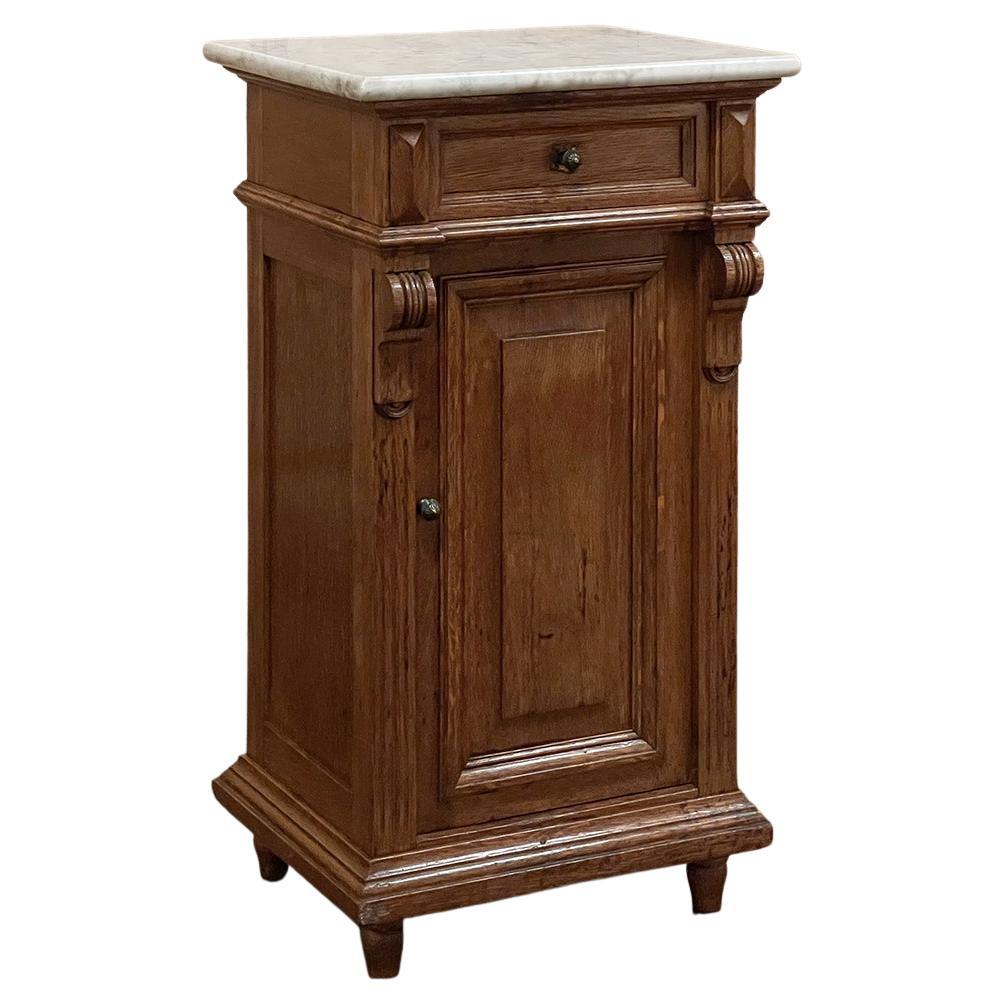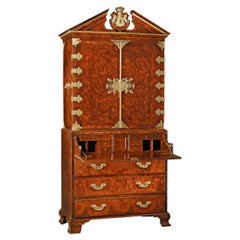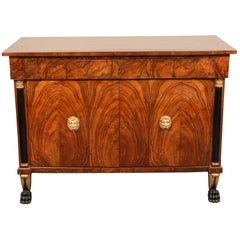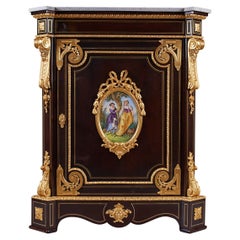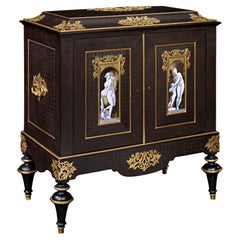
Second Empire Ormolu and Ebony Jewelry Cabinet by Giroux
View Similar Items
Want more images or videos?
Request additional images or videos from the seller
1 of 10
Second Empire Ormolu and Ebony Jewelry Cabinet by Giroux
About the Item
- Creator:Alphonse Giroux et Cie (Maker)
- Dimensions:Height: 43 in (109.22 cm)Width: 41.25 in (104.78 cm)Depth: 24.25 in (61.6 cm)
- Style:Napoleon III (In the Style Of)
- Materials and Techniques:
- Place of Origin:
- Period:
- Date of Manufacture:1866
- Condition:
- Seller Location:New Orleans, LA
- Reference Number:Seller: 31-47501stDibs: LU891127240572
About the Seller
5.0
Recognized Seller
These prestigious sellers are industry leaders and represent the highest echelon for item quality and design.
Established in 1912
1stDibs seller since 2010
93 sales on 1stDibs
Typical response time: 7 hours
More From This SellerView All
- Mahogany Upright Cane CabinetLocated in New Orleans, LAClassical style and impeccable design distinguish this English upright cane cabinet. Crafted of lustrous Cuban mahogany, this case is comprised of a beautifully paneled door which op...Category
Antique 19th Century English Cabinets
MaterialsBrass
- English Upright Cane CabinetLocated in New Orleans, LAThis English cane cabinet exhibits classical style and impeccable design. Crafted of lustrous Cuban mahogany, this upright case features a beautifully paneled door which opens to rev...Category
Antique 19th Century English Cabinets
MaterialsBrass
$28,500 - King George I Ambassadorial Secrétaire-CabinetLocated in New Orleans, LAThis highly important secrétaire-cabinet was crafted for and specially ordered by King George I for the British Ambassador to Russia. From its craftsmanship and materials to its exceptional artistry, it is a work of royal and historic significance that exudes power in each and every detail. The broken pediment at its apex features the simplified royal coat of arms bearing the king’s crown, while the interior is adorned by portraits of the British Royal Family. Placed within the ambassador’s St. Petersburg home, this entirely unique piece of furniture would have been a potent reminder of England's grandeur and political importance. Relations between England and Russia during this period were at an all-time high. Peter the Great had traveled to England in 1698 as part of his widely known “Grand Embassy” tour, wherein he attempted to gain foreign support against the Ottoman Empire. He spent a period of nearly four months there, meeting with King William III and his court on numerous occasions. Noted academic Arthur MacGregor wrote concerning the impact of the trip, “For two decades following Peter's visit, British influence in Russia reached a peak. It manifested itself in social custom, in craft practice and in ships and naval organization... it reached a significant sector of the population before relations cooled once again and the two nations pulled back from this era of unprecedented cordiality.” First and foremost, however, it is a reminder of British might and influence. By the reign of King George I, England had come into its own as a world power. Unique in its design, this cabinet is a reflection of the country’s might. It is crafted from the highest-quality solid walnut and burr walnut adorned by gilded lock plates and engraved hinges. The presence of ormolu at its apex and lining the doors was a rarity for this period, and its addition makes manifest the importance of the design. The outer doors open to reveal multiple interiors, including fifteen separate drawers around a central cupboard; the cupboard doors each bear mezzotint portraits of George I and his father, Ernest Augustus, Elector of Hanover. An etching after the portrait of George I dating to circa 1716 is in London’s Royal Academy. A second, inner pair of doors are adorned by mezzotints of the Prince and Princess of Wales (later Queen Caroline and George II), which are both after portraits by Sir Godfrey Kneller dated 1716 in the Royal Collection. A final portrait is revealed on the very interior of the cabinet, where a mezzotint of Frederick, Anne, Amelia and Caroline, children of the Prince of Wales, resides. An etching (circa 1715-1720) after this portrait can be found in the National Portrait Gallery (London). Apart from its abundance of royal portraiture, the cabinet features stunning painted decoration, including floral designs as well as clouds, birds and trees in a bucolic motif reminiscent of Eden. Its lower portion is a study in both form and function, featuring a fitted secrétaire-drawer above three additional drawers for storage. The cabinet appears in The Shorter Dictionary of English Furniture by R. Edwards from 1964, a text that is regarded as the bible of British furniture design. Edwards describes it as a “writing cabinet...given by George I to the British Ambassador at the Russian court.” The cabinet was likely made for the 18th-century German diplomat and writer Friedrich Christian Weber, who represented English interests at the Russian court from 1714 until 1719. Although Weber’s tenure as ambassador was relatively short, while in St. Petersburg, he authored his account entitled Das veraenderte Russland (The Present State of Russia), which was published in three volumes in 1721, 1739 and 1740. It may, however, also have been made for George Douglas, 2nd Earl of Dumbarton, who served as ambassador alongside Weber in 1716. Diplomatic relations ceased between the two countries in 1721. In 1928, the cabinet appeared for sale at the International Exhibition of Antiques & Works of Art in Olympia. It had previously been in the collection of the Woltner family of Bordeaux, the celebrated vintners who owned the estate Château Laville Haut-Brion and produced wine of the same name. According to the family, Monsieur Woltner was given the cabinet as a gift from an aunt who lived in Russia for many years. After leaving the Woltner collection, the cabinet was acquired by William Berry...Category
Antique 18th Century English Georgian Secretaires
MaterialsBrass
- Mahogany Bureau Cabinet After Thomas ChippendaleBy Thomas ChippendaleLocated in New Orleans, LAThis extraordinary Irish bureau cabinet was crafted based on a design for a desk and bookcase drawn from Thomas Chippendale’s famed 1762 edition of The Gentleman and Cabinet-Maker's ...Category
Antique 18th Century Irish Chippendale Cabinets
MaterialsMirror, Mahogany
- 19th Century Watch Winding Display CabinetLocated in New Orleans, LAThis incredible, one-of-a-kind watch display cabinet brings together the beauty of an antique with the functionality of modern technology. Crafted of mahogany, this 19th century jewelry display cabinet...Category
Antique 19th Century Unknown Empire Cabinets
MaterialsMahogany
- 19th Century French Secrétaire by DurandBy Gervais DurandLocated in New Orleans, LASuperior craftsmanship and intricate marquetry characterize this rare secrétaire by Gervais-Maximilien-Eugène Durand, one of the most popular French ébénistes of the 19th century. Th...Category
Antique 19th Century French Louis XV Secretaires
MaterialsBronze, Ormolu
You May Also Like
- Second Empire-Style CabinetLocated in Newport Beach, CAHandsome, two-door, burl veneered cabinet surmounted by a single drawer above. The face is framed by ebonized, parcel gilt pillars and features str...Category
Vintage 1930s Italian Commodes and Chests of Drawers
MaterialsWood, Burl
$18,200 - Delicate Porcelain Ormolu and Ebony Cabinet, Napoleon IIILocated in Warsaw, PLThe cabinet is crafted in Napoleon III style, which is also known as Second empire style. The main material of the cabinet is ebony with dark varnish finish. The top of the cabinet iscovered with Carrara marble, which was a popular combination of that time period. The large frizes atop and the small friezes on the bottom are sculpted with beautiful and delicate pearl-shaped motifs. The pearl motif dominates in this antique French cabinet, as it features also in the framing edge of the front panels of the door. It seems like the pearl motifs become an endless source of inspiration in this French gorgeous cabinet. On either side of the front corner panels of the cabinet is an image of a man's head gilded with ormolu, built into the modillions, where flowers hang from them.The corners of a cabinet are ornated with square rosettes which are overhung by rococo curves and shells. The acanthus leaf pattern complements the decoration of the 4 front corners of the cabinet. In the central door panel there is a medallion with a painting of two women with a goat standing by a tree surrounded by forest. The porcelain picture depicts the poetic beauty of people and landscapes in the French countryside. The bright colors in the porcelain painting brings more life in to the dark stained cabinet...Category
Antique 19th Century French Napoleon III Buffets
MaterialsMarble
- Napoleon III Style Ebony Ormolu Cabinet.Located in Warsaw, PL"This ebony ormolu cabinet is crafted from Empire style ebony under Napoleon III. In the 19th century, the Empire style prevailed in the years 1800 to 1815. Symmetry of lines, balance and order are characteristic of Empire style. This style embodies the art of sophistication, seduction and at the same time imbued with the greatness of Napoleon III. Thus, luxury Napoleon III style cabinet has very rampant arrogance and pathos, drama and flair. The top of the French cabinet is luxurious and noble white marble. Below the marble is a two-wing cabinet made from jet black ebony with mysterious and classy colors. The borders are acanthus motifs in the colors of ancient Greece. Consecutive acanthus motifs surround the pentagonal cabinet. The upper two corners of the front face are carved with the bust of a beautiful and elegant woman. French aristocratic beauty in the 19th century. Engraved curves combined with classic acanthus and anthemia motifs bring indescribable beauty. Marquetry brings a glamorous and glossy look to the French ormolu cabinet...Category
Antique 19th Century French Napoleon III Cabinets
MaterialsStone, Marble, Bronze
- Second Empire Period Gilt Bronze and Kingwood Display CabinetLocated in London, GBSecond Empire period gilt bronze and kingwood display cabinet French, c. 1860 Measures: Height 218cm, width 128cm, depth 42cm This fine displ...Category
Antique 1860s French Napoleon III Vitrines
MaterialsOrmolu, Bronze
- Large Second Empire Gilt Bronze and Marquetry Display CabinetLocated in London, GBLarge second Empire gilt bronze and marquetry display cabinet French, late 19th Century Measures: Height 271cm, width 235cm, depth 52cm This magnificent display cabinet exemplif...Category
Antique Late 19th Century French Napoleon III Vitrines
MaterialsOrmolu
- French 19th Century Empire St. Burl Elm, Ebony, Tulipwood, and Ormolu CabinetLocated in West Palm Beach, FLAn impressive and high quality French 19th century Empire st. burl elm, ebony, tulipwood, and ormolu cabinet. The large scale three door cabinet is raised by a straight base with an ...Category
Antique 19th Century French Empire Cabinets
MaterialsOrmolu
Recently Viewed
View AllMore Ways To Browse
Enamel Door Handle
Napoleon Eugenie
Maiden Cabinet
Merchants Drawers
Ormolu Hand Mirror
Giroux Paris
Mirror Second Empire
Checkerboard Cabinet
Engraved And Hand Painted Mirror
French Empire Trays
Antique Enamel Kitchen Cabinets
Large French Napoleon Iii Empire Style
Sevres Mirror
Napoleon Empire Jewelry
Sevres Tray
Alphonse Giroux
Alphonse Giroux Paris
Checkerboard Mirror
